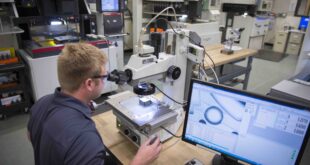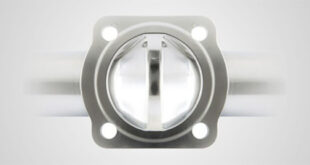Richard Moorse discusses the regulations that are in place for today’s commercial vehicles
The world’s first motorised commercial vehicle hit London’s roads in 1896 with a top speed of seven miles per hour and a payload capacity of 1500 kilograms — similar to that of today’s smaller vans.
As vehicles have become larger in size and weight, new regulations have been introduced to keep our roads safe.
The only contact a vehicle has with the road is through its tyres.
Because of this, drivers and vehicle owners must pay close attention to the condition of their tyres.
The Driver and Vehicle Standards Agency (DVSA) pays especially close attention to the tyres of commercial vehicles, which must be able to cope with their payload.
To help manage the safety of the UK’s commercial vehicles, the DVSA has implemented several regulations that must be followed not only by commercial vehicle drivers, but any road user.
Tyre pressures
TyrePal supplies a tyre pressure monitoring system (TPMS) that warns drivers when the tyre pressure requires adjustment. This is particularly important for commercial vehicles because tyre pressures impact their ability to cope with the payload.
There is also a TPMS that can monitor up to 22 wheels, making it ideal for HGVs.
Tread depth
The tread depth of tyres must be monitored carefully because it determines the amount of grip the vehicle has with the road surface.
Drivers of commercial vehicles must be aware that good grip is required for braking and that increasing the payload increases the stopping distance.
Vans and light commercial vehicles must have a minimum tyre tread depth of 1.6 millimetres across the central three quarters of the tyre and around the entire circumference.
It is important to consider the expected mileage of a journey, and whether the tread depth is likely to remain within legal limits throughout.
Operator compliance risk score
The operator compliance risk score (OCRS) is used to identify the vehicles posing the highest risk to other road users.
Data is collected over a three-year period and points are issued to vehicles for a variety of safety defects, including unsafe tyre pressures and tread depths.
Vehicles with more points are more likely to be pulled over and inspected by DVSA or police officers on the roadside.
Unlike other regulations, this score has a direct impact on the operator, rather than the driver. It is important for fleet managers to carefully consider the roadworthiness of their vehicles, else they risk being penalised.
PG9s
PG9s are roadworthiness prohibitions issued to vehicles that pose a danger to other road users. The effect of the prohibition depends on the severity of the defect.
If the vehicle’s tyre pressure is dangerously low, or the tread is below the legal limit, prohibition is immediate. This means the vehicle cannot be driven on public roads and the driver may face prosecution.
Driving abroad
Before driving a commercial vehicle abroad, drivers and fleet managers must check the regulations for that country. In most countries, the minimum tread depth allowed is 1.6 millimetres.
Regulations are likely to be more rigorous in countries that have harsh winters, such as Sweden, Norway, Finland and Germany.
In these countries, it is compulsory for all vehicles to have winter tyres fitted when there is snow and ice on the roads.
Winter tyres can be identified by a snowflake symbol on the side wall. Some countries may also require snow chains to be fitted in snowy and icy conditions.
As the number of commercial vehicles on our roads has soared since 1896, several regulations have been put in place to ensure the highest possible degree of safety to road users.
Both drivers and fleet managers must be aware of the regulations to ensure their vehicles comply and avoid costly fines or even prosecution.
Richard Moorse, head of technical at tyre pressure monitoring specialist, TyrePal.
 Engineer News Network The ultimate online news and information resource for today’s engineer
Engineer News Network The ultimate online news and information resource for today’s engineer

